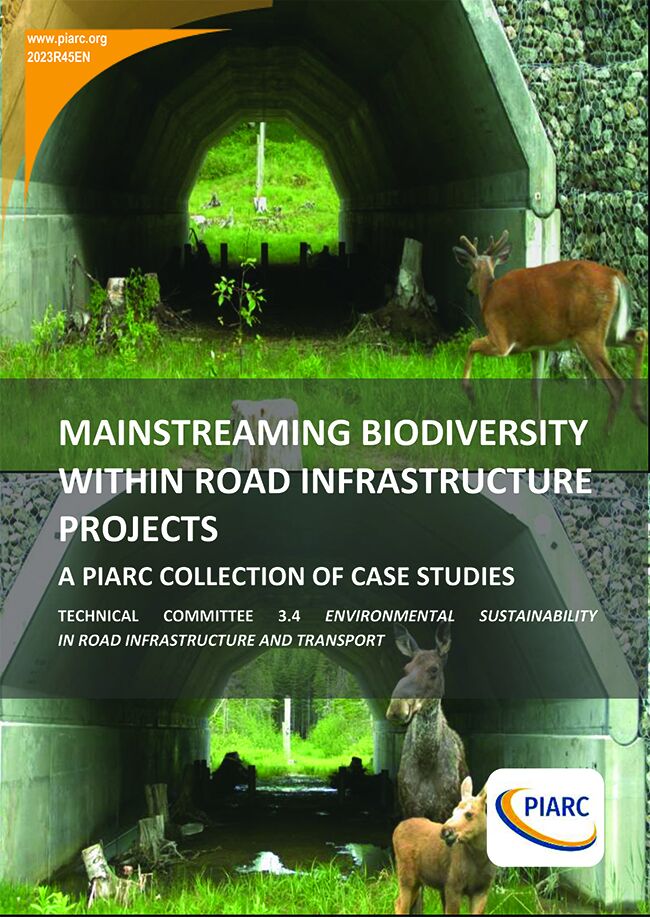Mainstreaming Biodiversity within Road Infrastructure Projects - A PIARC Collection of Case Studies

This document is an appendix to the Full Report 2023R44EN, and it contains the Case Studies collected by the WG3.4.3 team; the chapters listed here are those that structure the Full Report. The case studies illustrate the theoretical elements written in the Full Report.
The development of transport infrastructure is one of the basic elements of the development of countries and their economies. Economic development is often accompanied by environmental protection problems, including biodiversity impacts, because they have not been taken enough into account. Preventing land fragmentation, preserving biodiversity and continuity of ecological corridors is one of the most important challenges for transport infrastructure stakeholders.
The report is a global guide for specialists and decision makers planning, implementing, and managing transport infrastructure. Improperly prepared road network development plans and projects may lead to deep changes in their surroundings. In addition to adverse impacts on humans, impacts on defragmentation and biodiversity are often final. Road and traffic impacts can often lead to irreversible changes. Repair attempts can often fail or involve long-term repair programs with significant economic impact.
Regardless of location in the world, several biodiversity-related activities are universal. These activities and measures were included in the report as recommendations for both newly developed transport solutions and those that have already been created, are exploited and have a significant impact on biodiversity. The report, prepared by members of TC 3.4.3 "Road and road transport impact on wildlife habitats and their interconnections", is based mainly on their experiences from many countries. In accordance with the already known principles that are used in transport solutions, it promotes the basic principle "avoid impact and if it is impossible, apply mitigation measures and, if necessary, also apply compensatory measures". Necessary action in the management of biodiversity also includes monitoring and evaluation of the effectiveness of the measures used.
Information sheet
- Date: 2023
- Author(s): Comité technique / Technical Committee / Comité Técnico 2020-2023 3.4 Infrastructures et transport routiers plus durables pour l’environnement / Environmental Sustainability in Road Infrastructure and Transport / Sostenibilidad ambiental en infraestructura vial y transporte
- Domain(s): Environment
- Type: 2023R45EN - A PIARC Collection of Case Studies
- PIARC Ref.: 2023R45EN
- ISBN: 978-2-84060-837-0
- Number of pages: 90